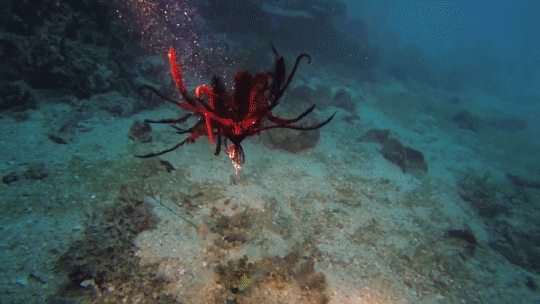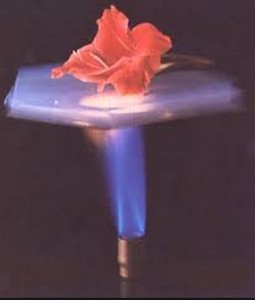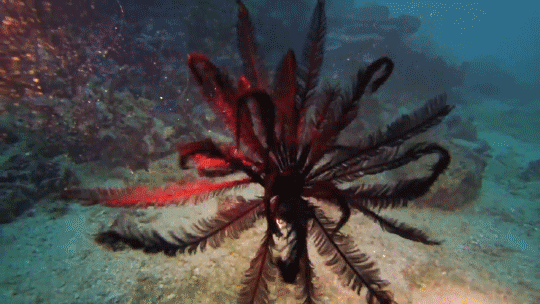Flying crinoids!
I think this thread on tumblr is ready to mirror here.
 See that swimming crinoid? Look at how those arms undulate! Lovely! How can we get something like that to work in air?
See that swimming crinoid? Look at how those arms undulate! Lovely! How can we get something like that to work in air?
Exxos-von-Steamboldt recommended lifting gas (for example hydrogen), which started a great discussion on Gert van Dijk’s work on hydrogen balloon-animals on his Fuhara website. Long story short, for hydrogen ballooning to work, the animal needs to be huge, and I’m not sure I’m ready for huge flying crinoids. Also, eh, balloon animals have been done.
So what can we do to get this thing behaving in air like it does with water? Why, fiddle with its Reynold’s Number, of course. “R = Vc / νwhere V is the flight speed, c is the chord, and ν is the kinematic viscosity of the fluid in which the airfoil operates, which is 1.460×10−5m2/s for the atmosphere at sea level.”
Then I screwed up the calculations and Turbofanatic rescued me.
You can follow the link to see the numbers, but basically, in order to move in air in the manner of the above gif, is to make those flailing arms either 14 times faster or 14 times wider (or some combination thereof).
But wait, there’s more! Turbofanatic reminded me that Reynold’s number isn’t the only thing to worry about here. That swimming crinoid is just a bit denser than water. In order to work the same way, our flying crinoid has to be about as dense as air. One way to do that is boring old gas bags (although they wouldn’t necessarily have to be filled with hydrogen or some other lighter than air gas. A big hollow beach-ball body would work too, it would just have to be large). Another is something totally crazy like an animal that uses some low-density gas as a solvent rather than water.
But I’m going to split the difference and ramp up the cool with…
Aerogels.
SEAgel makes an aerogel out of agar (a jelly-like complex sugar derived from seaweed) by removing the water through freeze-drying. An organism can’t freeze-dry itself (or if it can, I shall leave exactly how as an exercise for the reader), but it can draw the water out of its internal tissues chemically. Then we’re left with a shell of aerogel, which would be useful as insulation (probably how it evolved in the first place), protection from predators, and the best density-reduction this side of hydrogen gas. An aerogel shell (aeroshell?), if big enough, would reduce the overall density of the organism to that of air, the same way the crinoid is about as dense as water.
And we could have our fluttering crinoids.






